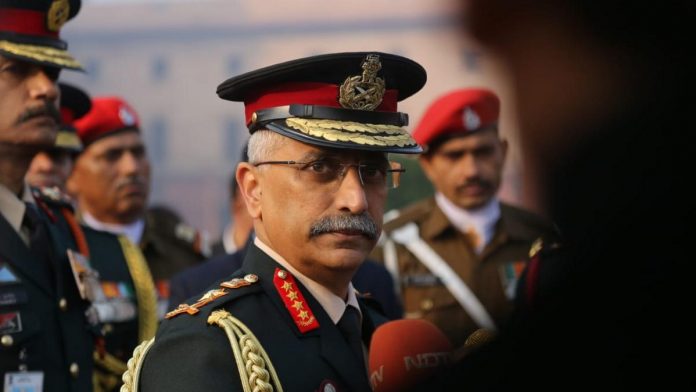
SRINAGAR – Indian Army is focussing on “actions below the threshold of all-out war” while strengthening its conventional prowess, army chief General M.M. Naravane has said.
Addressing a seminar organised by CLAWS, the Army’s think tank, in New Delhi Naravane spoke at length about the evolution of warcraft even as he emphasised the continued relevance of the ancient philosopher Chanakya’s famous treatise Arthashastra.
He spoke about how the Balakot air strikes were an example of playing the “escalatory game” with skill.“We are refining our plans and capacities in this regard — both, along the western (Pakistan) and northern (China) borders. We are developing kinetic and non-kinetic responses to address the threat,” he is quoted to have said by the online portal The Print.
He said the world was witnessing a new phenomenon — the availability of sufficient space for demonstration of military prowess and ascendancy that doesn’t erupt in an all-out conflict “Supposed acts of war not leading to war,” he said. “The Houthi rebels’ attack on Riyadh airport and oil facilities in Saudi Arabia and closer home, the Balakot air strike, saw these short, intense, escalatory cycles of military activity, in full media glare, where sophisticated information narratives played an equally important role.”
For years, General Naravane said, it was believed that any crossing of the Line of Control by air would lead to a full-fledged war.“Balakot demonstrated that if you play the escalatory game with skill, military ascendancy can be established in short cycles of conflict that do not necessarily lead to war,” he added.
General Naravane also talked about the changing military technology and how “military icons of the 20th century”, like tanks and fighter aircraft, were on their way out the same way the “Sony Walkman” was made redundant by newer technologies to hear music. The Army, he added, was looking at the possible induction of laser and directed-energy weapons.
The Army chief praised “Chanakya neeti (policy)” saying the Indian tradition of strategic thought was epitomised by works like the Arthashastra. He said the ancient treatise provided new fodder for thought to effect change in contemporary thinking. “Kautilya enunciated the sutra (manual) underlining the four forms of strategic means against enemies, in order of usage — ‘saam (conciliation)’, to advice and ask, ‘daam (gifts)’, to offer and buy, ‘dand (coercion)’, to punish, and ‘bhed (dissension)’, for exploiting secrets,” he said.
Follow this link to join our WhatsApp group: Join Now
Be Part of Quality Journalism |
Quality journalism takes a lot of time, money and hard work to produce and despite all the hardships we still do it. Our reporters and editors are working overtime in Kashmir and beyond to cover what you care about, break big stories, and expose injustices that can change lives. Today more people are reading Kashmir Observer than ever, but only a handful are paying while advertising revenues are falling fast. |
| ACT NOW |
| MONTHLY | Rs 100 | |
| YEARLY | Rs 1000 | |
| LIFETIME | Rs 10000 | |










